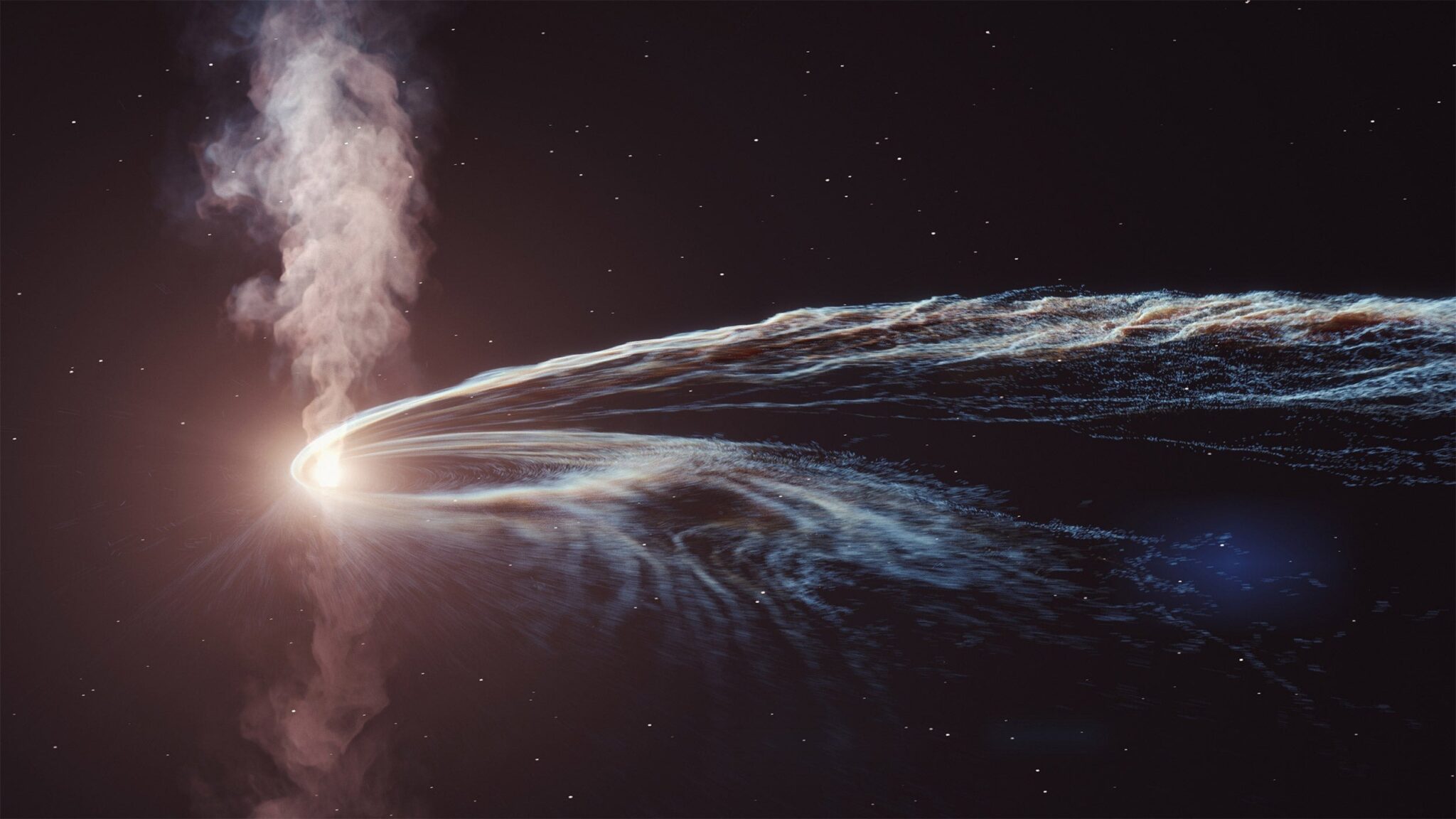Observations of a supermassive black hole located a billion light-years from Earth have helped determine its rotation speed. A study conducted by astrophysicist Dheeraj Pasham from the Massachusetts Institute of Technology (MIT) was able to determine the rotation speed of a black hole based on its accretion disk, which opens up new opportunities for studying these objects. It turns out that the black hole rotates at less than 25% of the speed of light, which is quite slow for such objects. Although this figure is not very significant, the fact of its discovery is very important.
Supermassive black holes found in the centers of galaxies have a mass of millions or billions of times the mass of the Sun. They play a key role in the evolution of galaxies and can manifest both calm and extremely active objects, creating bright flares of light.
In 2020, astronomers observed an unusual phenomenon in a galaxy a billion light-years away. The previously calm black hole suddenly released a giant flare of light, named AT2020ocn. Data collected by the telescopes showed that this was probably the result of a tidal rupture event – the gravitational destruction of a star that flew past a black hole. When a star breaks apart, its material forms a hot disk around the black hole. A star can approach a black hole from either side, and the disk can shift relative to the spin of the black hole, causing fluctuations or precession when the black hole aligns it with its spin.
“But the key was to have the right observations. The only way you can do this is, as soon as a tidal disruption event goes off, you need to get a telescope to look at this object continuously, for a very long time, so you can probe all kinds of timescales, from minutes to months,” notes Pasham.

Instruments scanning the sky in search of objects that suddenly become brighter made it possible to catch AT2020ocn quite early. Pasham and his colleagues continued to observe and monitor the galaxy, recording the precession of the disk until it stabilized.
They found that the galaxy flared up in X-rays every 15 days, which they attributed to the precession of the disk. Using this data, together with an estimate of the mass of the black hole (approximately 2.5 million solar masses), scientists were able to calculate its rotation speed.
These data indicate only one black hole, but the method of determining its rotation is really useful. If we can use instruments such as the upcoming Vera Rubin Observatory to detect and observe tidal rupture events, we will be able to map the distribution of various spins and learn more about the evolution of black holes.
Earlier, we reported on how the oldest black hole destroyed the theory of their formation.
According to sciencealert.com


